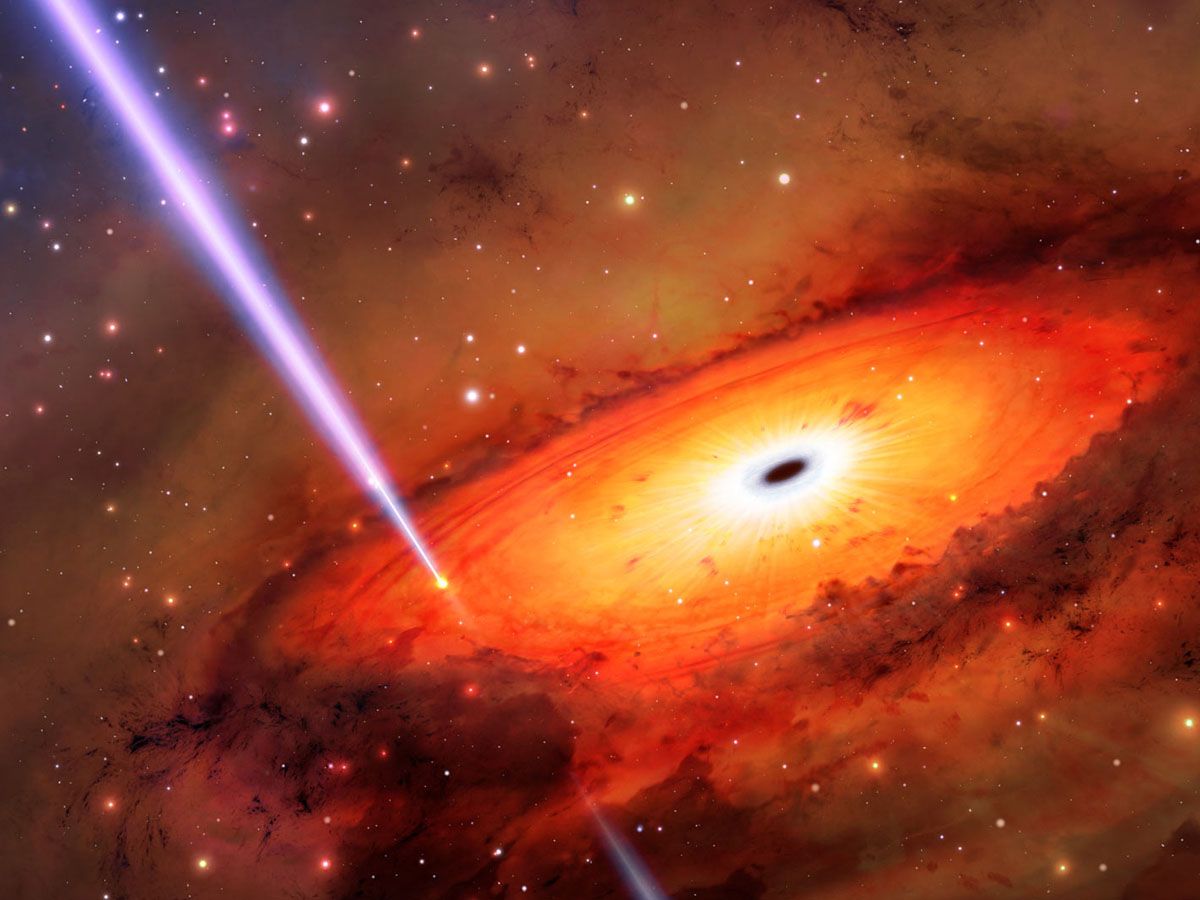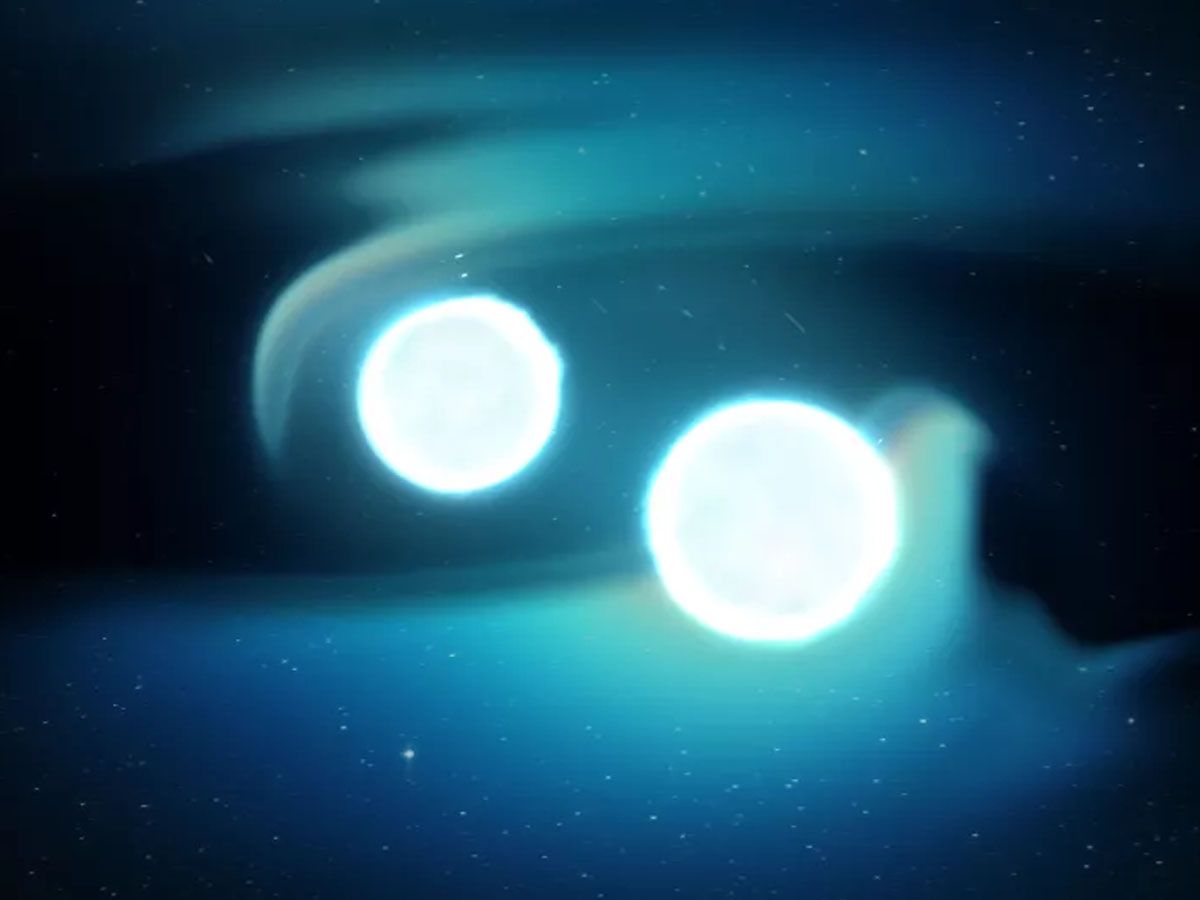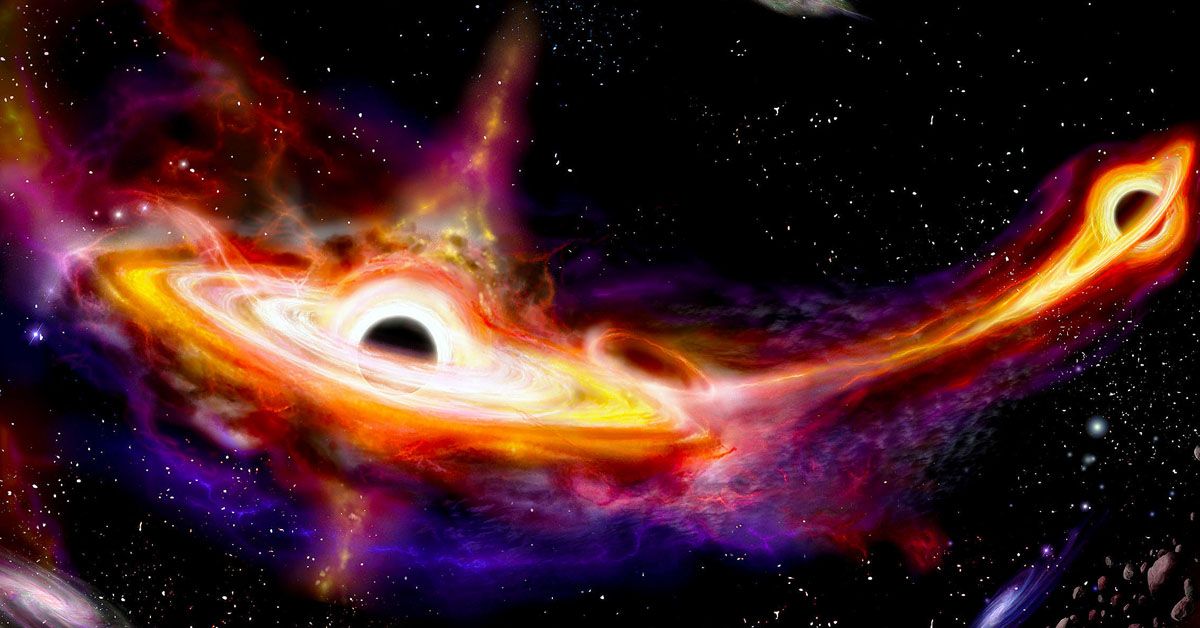Within the expanse of the universe, stars undergo a diverse array of captivating endings. Conventionally, we have come to perceive these final acts as falling into one of three categories: the metamorphosis of low-mass stars into white dwarfs, the explosive demise of more substantial stars through supernovae, or the encounter between binary systems consisting of remnants of stars.
Nevertheless, a recent groundbreaking investigation conducted by an international collective of astrophysicists has proposed an alternative possibility for the termination of a star's existence.
Their pioneering revelation revolves around a formidable burst of gamma rays (known as a gamma-ray burst or GRB), originating not from the anticipated deaths we have grown accustomed to, but rather from a tumultuous convergence of stars or remnants of stars within the dense vicinity surrounding a supermassive black hole.
Traditional Understanding of Stellar Death
Traditionally, scientists believe that stars' fate largely depends on their mass. Low-mass stars, for instance, tend to evolve into white dwarfs at the end of their lifecycle.
White dwarfs are dense, hot, and compact remnants left behind after a star has exhausted its nuclear fuel.
On the other hand, stars of a more considerable mass meet a rather dramatic end. They explode in an event known as a supernova.

These explosions are astoundingly powerful and result in either a neutron star or a black hole, depending on the original star's mass.
Yet another intriguing spectacle occurs when binary systems of stellar remnants collide. Binary systems are pairs of stars that orbit a common center.
When these stellar remnants collide, they often lead to a spectacular outburst of energy, which is detectable from Earth.
However, the recent discovery suggests that stellar death is not limited to these three methods and that other extraordinary circumstances might also lead to a star's end.
A Fourth Stellar Death Proposition
As vast as the cosmos may be, there exist regions where stars are packed so closely together that collisions are a possible occurrence.
The new research proposes this very idea that star collisions might lead to a powerful spectacle known as a gamma-ray burst, adding a fourth method to our understanding of stellar deaths.
The cores of ancient galaxies play a significant role in this proposition. Though sparse in massive stars, these aged cosmic structures are teeming with ultra-dense stellar remnants like white dwarfs, neutron stars, and black holes.

The density of these remnants, coupled with the potent gravitational force exerted by a supermassive black hole, can create an environment ripe for chaotic stellar collisions.
As stars move in random directions under gravitational influence, occasional collisions can trigger massive explosions visible from vast distances.
The First Evidence: GRB 191019A
The evidence supporting this theory arrived as a gamma-ray burst, labeled GRB 191019A, observed in October 2019.
Captured by NASA's Neil Gehrels Swift Observatory, this powerful outburst of gamma rays piqued the interest of the global scientific community.
Further observations, made using the Gemini South telescope, narrowed down the origin of GRB 191019A.

It was traced back to a region less than 100 light-years away from a supermassive black hole at the heart of an ancient galaxy around 3.4 billion light-years away, a setting that fits the proposed theory perfectly.
What makes GRB 191019A unique is the absence of a corresponding supernova, a phenomenon typically associated with massive star collapses.
Instead, the characteristics of this gamma-ray burst align more closely with the newly proposed theory that it is the result of a stellar collision near a supermassive black hole.
Challenging the Existing Knowledge of GRBs
The discovery of GRB 191019A ushers in a new perspective that challenges our current understanding of gamma-ray bursts (GRBs). We have typically classified GRBs into short and long categories, each with distinct causes.
However, the distinct characteristics of GRB 191019A neither fit into the box of a typical massive star collapse nor neatly align with our existing models of short and long GRBs.
The data gathered from GRB 191019A strongly suggest that it was not caused by a standard stellar collapse but instead by a collision.

Unlike previous collisions observed between binary pairs, the event behind GRB 191019A appears to be more random and chaotic, a characteristic that separates it from standard collisions.
This discovery, thus, urges us to reevaluate our present knowledge of these cosmic explosions. The implications of this groundbreaking discovery extend beyond our understanding of GRBs alone.
The evidence also offers novel insights into the formation of binary systems, pairs of closely orbiting stars, or stellar remnants in ancient galaxies.
The Obstacles to Understanding Stellar Collisions
While this new perspective on stellar deaths is exciting, there are challenges to its study. One significant hurdle is the obscuring effect of dust and gas found in the galactic centers.
These materials can mask or distort the visibility of stellar collisions, making it difficult for astronomers to detect and study these powerful cosmic events.
To overcome these obstacles and gain a more comprehensive understanding of these extraordinary explosions, astronomers and astrophysicists worldwide are gearing up for more extensive observations.
Interestingly, these collisions might create gravitational waves, becoming an unexpected source. Detection instruments like LIGO could prove instrumental in uncovering these obscured events.
The Vera C. Rubin Observatory, expected to begin operations in 2025, is set to play a crucial role in studying such events. The observatory's cutting-edge technology will enable astronomers to detect and investigate cosmic events like GRB 191019A more effectively.
The goal is to detect more events similar to GRB 191019A, which could shed more light on their nature and origins. This mission is not a small feat but is a necessary step in our journey to unlock the universe's mysteries.
Sources: nature.com













